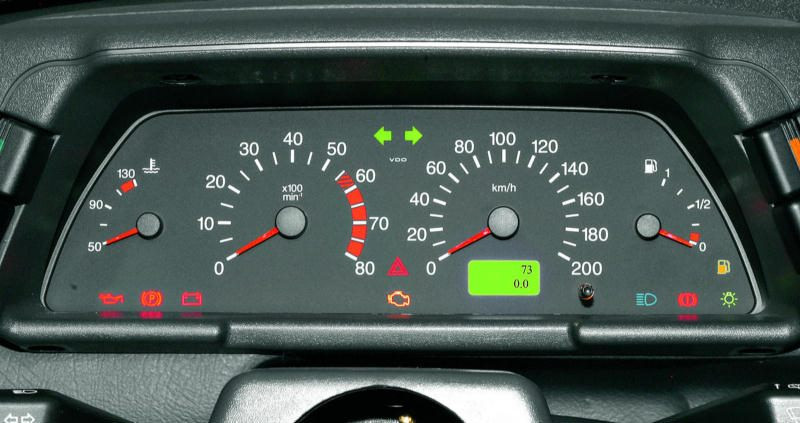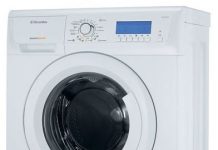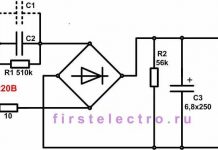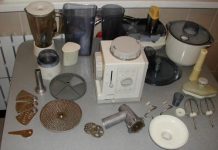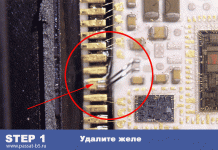After the diagnostics, you found that the arrow falls or constantly jumps from top to bottom due to the inoperative speed sensor, then this problem can be solved with your own hands.
For work, you will need special keys. It is recommended to replace the speed sensor above the power unit:
VIDEO
If the abnormal behavior of the speedometer needle has led you to the need to change the entire speedometer assembly with a dashboard, we strongly do not recommend doing such work on your own. Only having a lot of experience, a baggage of knowledge and skills gives you the opportunity to carry out such manipulations.
The speedometer is installed on any modern car, it can be of various types - liquid crystal, dial, indicator. If the device stops working, it becomes more difficult for the driver to navigate by speed, it is easier to break the speed limit.
On the VAZ-2110 car, speedometers are with electronic and mechanical drive, devices of the second type were installed on cars of the first years of production with carburetor engines (8 valves). Later, electronic speedometers began to be used on the "top ten", the torque from the gearbox to the dashboard is transmitted to them through the speed sensor.
All devices on the VAZ top ten, showing the speed of the car, are pointer, and signs of a malfunctioning state are determined by deviations from the norm of the speedometer needle. If the speedometer is faulty, the arrow when the vehicle is moving:
does not deviate from zero, that is, does not show speed at all;
stuck in one position, does not move in one direction;
jumps, abruptly changing the readings, while the displayed speed does not correspond to reality.
There are other signs of a malfunctioning speedometer, for example, on a cold engine, the device works, and its readings are correct. As the engine warms up completely, the arrow freezes and stops moving.
The main reason why the speedometer on the VAZ-2110 injector does not work is contamination (oiling) of the speed sensor (DS), especially often a failure occurs if the DS gets oil from the gearbox or engine (for example, there is a leak from the valve cover of the internal combustion engine ). There are also other reasons:
the speedometer itself is out of order;
the speed sensor has broken (this part on AvtoVAZ cars is not highly reliable);
there is no normal contact in the DC plug or there was a break (short circuit) of the wires;
the speedometer drive gears installed in the gearbox have broken. Before you start changing anything, you need to find out why the device does not show the speed. First of all, they start checking with the speed sensor, since most often all failures in work are associated with it. We examine the DS for contamination, see if there is a break in the wires.
If the electrical part of the sensor is faulty, the Check Engine lamp on the instrument panel comes on. During computer diagnostics with a faulty sensor, the error code P-0501, P-0501 or P-0503 is displayed on the scanner. Another error is determined by the on-board computer installed on the car.
There are also other signs of a faulty DS:
at idle, the internal combustion engine is unstable, and the engine can also stall at low speeds;
fuel consumption has increased.
It is quite difficult to check the electrical circuit from the DS to the speedometer on a VAZ-2110 injector, so it is better to resort to the help of specialists here.
The gears of the DS drive, which are in the gearbox, can also break. It is easy to check the drive itself - you need to unscrew two bolts of its fastening with a 10th key, make a visual inspection of this mechanism.
If the plastic gear has broken teeth, chances are good that the gear is also broken in the gearbox. To replace the drive gear, you will have to remove and disassemble the gearbox.
On cars of the first 2110 editions with a carburetor, the speedometer needle is driven from the gearbox by a mechanical cable, and it is much easier to determine the cause of the malfunction here than in the electronic circuit. It is simple to check the serviceability of the speedometer cable (TS): it must be disconnected from the gearbox - if at its end the tetrahedron is intact, then everything is in order in this connection.
Then we grab the end of the cable with our fingers and try to twist it, if there are no cable breaks, the arrow of the speedometer should start moving (rising). If the vehicle rotates too freely with your fingers, the cable is most likely broken. To check the mechanical speedometer "tens" itself, it is necessary to remove the instrument cluster.
On the VAZ-2110 with an injector, a separate device showing the speed of the car is not for sale, and the instrument cluster for 2110-11-12 changes in assembly. If it turns out that the cause of the malfunction lies in the instrument panel, it must be changed. We remove the instrument cluster (old model) as follows:
on opposite sides of the steering wheel from below, unscrew the two screws of the plastic frame;
unscrew the two upper screws of the plastic edging, in total, the frame is attached to 4 self-tapping screws,
putting the cover forward, disconnect all the plugs from it;
we unscrew the screws securing the instrument panel, they are located on the sides of the combination;
we pull off the instrument panel from the upper latches and move it towards the steering wheel;
behind the instrument cluster, disconnect two plugs;
we take out the dashboard, now it remains to install a new part, assemble in the reverse order.
The main reason for the speedometer malfunction is the failure of the speed sensor, and if the DS is faulty, it must be changed. It is not difficult to replace the sensor on the top ten VAZ, almost any driver can do this work independently. The operation is especially easy on a machine with an 8-valve engine. Let's start replacing:
we put the car on a flat horizontal plane, here you can do without a pit or a car lift;
we find the sensor - it is located on top of the gearbox housing, not far from the oil dipstick;
to disconnect the plug from the sensor, press on the latch bracket;
turn the sensor itself with a 22 counterclockwise key, often the DS is turned away by hand;
when installing a new part, we use hand force, it is not recommended to wrap the DS with a key, you can break the part or break the thread.
When installing, we put the connector in place, it should snap into place with a click, this work can be considered finished. With sufficient skill, such an operation is performed in 5-10 minutes.
Often, car owners encounter a problem when, after replacing the sensor, the speedometer needle starts to "lie" - to show the wrong speed. It should be noted that for VAZ "dozens" several types of DS have been developed, and they have different catalog numbers. When buying, you should pay attention to the number of the failed sensor, and you need to purchase a new part only with the same marking.
The search for the cause of the inoperability of the speedometer should begin with an external inspection of the DS and the wires going to it. It is not uncommon for wires to break in the immediate vicinity of the plug.
If the speed sensor is covered with a layer of dirt or oily, it is necessary to remove it, wipe it, reinstall it and check the speedometer readings again. Perhaps, after that, the instrument arrow will start to show the speed normally again.
If you cannot deal with the malfunction on your own, you should contact the car service to an electrician.
VIDEO The purpose of the speedometer on any car is to demonstrate the speed of the vehicle. Like any other unit on domestic cars, this mechanism may fail over time. For what reasons the speedometer does not work on a VAZ 2110 car, how it manifests itself and how you can diagnose the device - read this article.
On domestic "tens" can be installed an electronic or mechanical device, characterized by the presence of a certain drive. Mechanical automobile speedometers (AS) were installed on the first "dozens" equipped with eight-valve carburetor motors. Subsequently, these models began to be equipped with electronic devices. In this case, the torque from the transmission is transmitted to the control panel using the speed controller.
Control panel "tens"
The VAZ 2110 speedometer is a pointer device, respectively, any signs of its breakdown will be determined in accordance with the deviations of the arrow.
If the speedometer on the VAZ 2110 does not work or its operation is incorrect, this may manifest itself as follows:
the arrow does not move away from position 0, that is, it does not show the speed of movement at all;
it hangs in a certain position and does not move in either direction;
the arrow of the speedometer jumps, the AC readings will be incorrect.
If the speedometer stops working, other symptoms may indicate this. For example, on an unheated engine, the device works in normal mode, and when the power unit warms up, the AC arrow freezes and does not move anymore. The main reason the device can stop working on an injection engine is a dirty speed sensor. This element often fails as a result of contact with engine or transmission fluid on its structure.
So, if the speaker does not work, this may be due to the following reasons:
the speed controller is out of order;
the speaker itself broke down;
the speed controller is not securely fixed, there is poor contact with the connector, or there is a break in the wiring;
there was a breakdown of the AC drive gears that are in the checkpoint;
most often it is the oxidation of the contacts on the sensor.
Decimal speed sensor
Before proceeding with the repair or replacement of the device, it is necessary to determine exactly what is the reason for its inoperability. First, you should diagnose the speed controller, since usually AC malfunctions are associated with it. Visually inspect the device for contamination, make sure that there are no breaks in the wiring. As a rule, in case of failure of the electrical part of the controller, the Check indicator appears on the control panel. If you decide to check your "ten" using a computer, then the diagnostics may show errors P0501-P0503.
Failure of the sensor can be determined by some symptoms:
at idle, the engine is unstable, and the internal combustion engine can also stall for no reason;
increased fuel consumption.
It is not so easy to diagnose the regulator board itself on injection motors; it is better to carry out this procedure with the help of specialists. However, you can check the condition of the device drive gears with your own hands, for this you need to unscrew the two screws fixing the controller with a 10 spanner. If you notice that there are broken teeth on the plastic gear, this may indicate that the transmission gear also has defects. To replace the gear, which is in the box, the unit will have to be dismantled and disassembled (the author of the video is the Autoelectric HF channel).
In the case of carburetor ICEs, the AC connection diagram is slightly different - the arrow of the device moves as a result of the action of a special cable connected to the gearbox. Since the overall circuit is simpler, it is not a problem to determine if a node is faulty. To diagnose the cable, you just need to disconnect it from the transmission and assess its condition. If the tetrahedron at its end is intact, this indicates that everything is fine with the device.
Some expert recommendations regarding the diagnosis and repair of speakers:
Diagnosis of the cause of the failure of the unit should begin with a visual inspection of the speed sensor, as well as the wiring connected to it. As practice shows, often the reason lies in a break in the wiring, in particular, in the place next to the plug.
In the event that the controller is covered with dust or oil, it must be dismantled and wiped thoroughly. Then the sensor can be put in place and try to check the performance of the speaker. There is a possibility that after these actions the speaker will operate normally.
In no case should it be possible to drive with an inoperative speaker, therefore, if problems are found in its operation, and you cannot check it yourself, you need to seek help from a specialist.
Sorry, there are currently no polls available.
How to do it yourself check the control panel "ten", as well as the speedometer, learn from the video below (author - Mr. Maks channel).
Devices in the car help the driver to navigate in the road situation and monitor the operation of components and assemblies. The speedometer is an important device located in the center of the instrument panel. Its arrow shows the speed of the vehicle. If the speedometer does not work, then the driver is putting himself and the passengers in danger. In addition, he may receive a speeding ticket from the traffic police. The correct operation of the device will help to avoid troubles on the road. In this article, we will analyze in more detail the reasons for the failure of the speedometer on the VAZ 2110 and how to eliminate them.
The main signs of a non-working speedometer are as follows:
when the car is moving, the arrow remains in place;
during movement, the arrow twitches or freezes in place;
the speedometer works until the engine is warmed up to operating temperature, and later the needle freezes and does not move.
The speedometer occupies the center of the dashboard. The arrow of the device shows the speed of the vehicle
When the described symptoms appear, check the operation of the speedometer, find the cause and eliminate it. Diagnostics and repair of devices on a VAZ 2110 with an injector and a carburetor is carried out in different ways.
In the "top ten" with a carburetor, the torque is transmitted from the gear in the gearbox (gearbox) through the flexible shaft to the speedometer mechanism. In most cases, it is the shaft that can be the cause of the malfunction.
Flexible drive in the shell - the main reason for the malfunction of the speedometer
If the speedometer stops working, first of all they check the attachment points of the flexible drive ... Tighten the nuts. If the speedometer does not work even after tightening, then it is likely that the shaft has broken or there is a breakdown in the mechanism on the dashboard. In this case, the flexible shaft must be replaced. Such repairs can be done by hand. Avoid strong bends when installing a new actuator. Incorrect shaft installation will result in an unpleasant knocking sound.
If everything is in order with the flexible shaft and the dashboard mechanism, then the problem is in the gear. It is located inside the checkpoint. We recommend that such repairs be carried out at a service station.
An electronic speedometer is installed on the VAZ 2110 with an injector. It is located on the dashboard. If there is a malfunction in it, then change the shield assembly. Repair parts are not supplied separately. But in 90% of cases, the malfunction is hidden elsewhere.
The speed sensor with wiring is suitable for VAZ 2110, 2109, 2112, 2113
The VAZ 2110 speedometer receives a control signal from the speed sensor (DS).It is screwed into the car's gearbox. Torque is transmitted through two gears mounted on the gearbox shaft.
The first reason is contamination of the speed sensor ... The engine compartment of the VAZ 2110 is not clean. Dirt and oil can cause the speedometer to glitch. Breakage is eliminated by washing and drying the DS.
The speed sensor is located on the gearbox. It is more convenient to get to it from above, and not from the bottom of the car.
The second common reason is poor or no contact. ... It is necessary to check the wiring, contacts on the connecting chips, the fuse in the mounting block. If everything is in order with the contacts and wires, then check the speed sensor itself.
A non-working DS is the third reason why the speedometer on the top ten may not work ... The sensor is diagnosed independently as follows:
Unscrew the sensor from the gearbox.
Connect a screwdriver or drill to the sensor drive.
Switch on the ignition.
Rotate the sensor drive counterclockwise.
If the needle moves, then the sensor is in good order, and the reason for the inoperative speedometer must be looked for inside the checkpoint. Its inexperienced driver cannot eliminate it himself. In this situation, contact a workshop. If the arrow is in place, change the sensor.
Conduct an independent diagnosis and elimination of most of the causes of a non-working speedometer on a VAZ 2110 within the power of everyone. But if there is no self-confidence or the problem is hidden in the gearbox, then it is better to resort to the help of car repair specialists. Remember: speeding is the main cause of road accidents!
A speedometer is a device designed to measure the speed of a vehicle. In the modern automotive industry, an electronic version of the device is mainly used.
The domestic automotive industry began to use an electronic speedometer since the release of the VAZ-2110, the power supply system of which was based on an injector.
Therefore, if the speedometer does not work even on relatively old cars, the reason should be sought in the wiring elements.
The speed measurement system in a modern car includes such elements as:
Speed sensor installed in the gearbox;
Electronic engine control unit;
Speedometer display on the instrument panel;
Wiring.
The electronic control unit calculates the speed of the machine based on the frequency of the pulses it receives. This is the principle of operation of an electronic type speedometer. In parallel with the correction of engine operating modes, the control unit transmits information about the speed of the car to the speedometer and diagnostic block.
If there is a trip computer with "K" DC output, speed data can be duplicated on its scoreboard.
If the speedometer stops working, troubleshooting is carried out in several directions. The failure can be caused by the following breakdowns:
Failure of the speed sensor;
Damage to electrical wiring;
Oxidation of "mass" contacts;
Malfunction of the speedometer itself;
ECU malfunction;
Incorrect installation of the instrument panel after removal.
The diagnostic sign of a blown fuse F19 is:
Failure of the entire instrument panel;
Failure of the diagnostic unit;
Failure of the automatic door locking system;
Failure of reversing lamps.
Before replacing a fuse, it is advisable to find out and eliminate the cause of the blown fuse. In most cases, this happens when there is a short circuit in the wiring system of a VAZ-2110 or VAZ-2114 car.
Fault diagnostics begin by disconnecting the wire harness from the speed sensor harness and checking them using a warning light.
To make a control light bulb, you need any car lamp capable of operating at a voltage of 12 V, and two wires about 1 meter long each.One of the wires is fixed to the positive terminal, the other - to the negative terminal of the lamp. Also, the received device includes a battery of the "Krona" type.
To carry out the test, one wire of the test lamp is fixed to the body or battery ground, and with the second, short frequent touches are made to the middle contact of the DS connector. If there are no faults in the section, the connector is the speedometer, the arrow of the latter will slightly shake or rise. If the arrow shakes, the answer to the question why the speedometer does not work can be considered found - the speed sensor needs to be replaced.
In cases where the reaction of the arrow to tapping on the central contact of the pads cannot be detected, it is necessary to "dial" the speedometer power circuit. The procedure is carried out using a multimeter (multitester), or by using the same control lamp.
VIDEO If the tester in the "continuity" mode indicates a violation of the continuity of the circuit, further troubleshooting is carried out in this direction. It is necessary to check the fuses, wire connections, their integrity inside the insulating braid.
The search area can be reduced by gradually “ringing out” individual sections of the chain. On model 2114 and other VAZ products, the reason for the failure of the speedometer is often the oxidation of "mass" contacts fixed on the car body.
In cases when the speedometer needle does not work, however, there is no data on faults in the electrical supply circuit, a natural conclusion is made about the malfunction of the device itself. Additional verification can be done by temporarily installing a known-good dashboard.
Repair of the speed measuring system directly depends on the detected malfunction:
Clean from contamination;
Clean the pads' contacts from corrosion and oxides;
If the above measures do not help, the sensor is replaced.
Check and clear "bulk" contacts;
To solder or fix with the help of "twists" the places of the broken wires, due to which the speedometer stopped working;
Cover the damaged areas of the sheath with insulating tape;
Replace defective fuses;
Clean the pads contacts from oxides and corrosion.
VIDEO If the speedometer stops working, it is replaced. On domestic cars assembled using an electronic type of speed meter, the speedometer changes along with the instrument panel. You can carry out this operation yourself. To complete it, you only need a Phillips screwdriver and pliers.
VIDEO
Video (click to play).
Repairing an old speedometer can be much more expensive than replacing an old instrument cluster with a new one.

